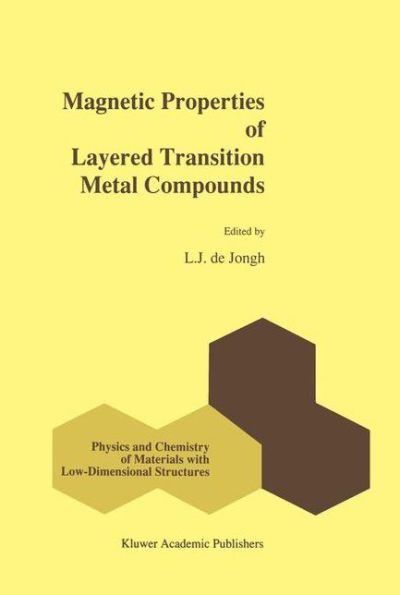Magnetic Properties of Layered Transition Metal Compounds
In the last two decades low-dimensional (low-d) physics has matured into a major branch of science. Quite generally we may define a system with restricted dimensionality d as an object that is infinite only in one or two spatial directions (d = 1 and 2). Such a definition comprises isolated single chains or layers, but also fibres and thin layers (films) of varying but finite thickness. Clearly, a multitude of physical phenomena, notably in solid state physics, fall into these categories. As examples, we may mention: • Magnetic chains or layers (thin-film technology). • Metallic films (homogeneous or heterogeneous, crystalline, amorphous or microcristalline, etc.). • I-d or 2-d conductors and superconductors. • Intercalated systems. • 2-d electron gases (electrons on helium, semiconductor interfaces). • Surface layer problems (2-d melting of monolayers of noble gases on a substrate, surface problems in general). • Superfluid films of ~He or 'He. • Polymer physics. • Organic and inorganic chain conductors, superionic conductors. • I-d or 2-d molecular crystals and liquid crystals. • I-d or 2-d ferro- and antiferro electrics.
1100755787
Magnetic Properties of Layered Transition Metal Compounds
In the last two decades low-dimensional (low-d) physics has matured into a major branch of science. Quite generally we may define a system with restricted dimensionality d as an object that is infinite only in one or two spatial directions (d = 1 and 2). Such a definition comprises isolated single chains or layers, but also fibres and thin layers (films) of varying but finite thickness. Clearly, a multitude of physical phenomena, notably in solid state physics, fall into these categories. As examples, we may mention: • Magnetic chains or layers (thin-film technology). • Metallic films (homogeneous or heterogeneous, crystalline, amorphous or microcristalline, etc.). • I-d or 2-d conductors and superconductors. • Intercalated systems. • 2-d electron gases (electrons on helium, semiconductor interfaces). • Surface layer problems (2-d melting of monolayers of noble gases on a substrate, surface problems in general). • Superfluid films of ~He or 'He. • Polymer physics. • Organic and inorganic chain conductors, superionic conductors. • I-d or 2-d molecular crystals and liquid crystals. • I-d or 2-d ferro- and antiferro electrics.
219.99
Out Of Stock
5
1

Magnetic Properties of Layered Transition Metal Compounds
422
Magnetic Properties of Layered Transition Metal Compounds
422Related collections and offers
219.99
Out Of Stock

Product Details
| ISBN-13: | 9780792302384 |
|---|---|
| Publisher: | Springer Netherlands |
| Publication date: | 04/30/1990 |
| Series: | Physics and Chemistry of Materials with Low-Dimensional Structures , #9 |
| Edition description: | 1990 |
| Pages: | 422 |
| Product dimensions: | 6.10(w) x 9.25(h) x 0.04(d) |
From the B&N Reads Blog
